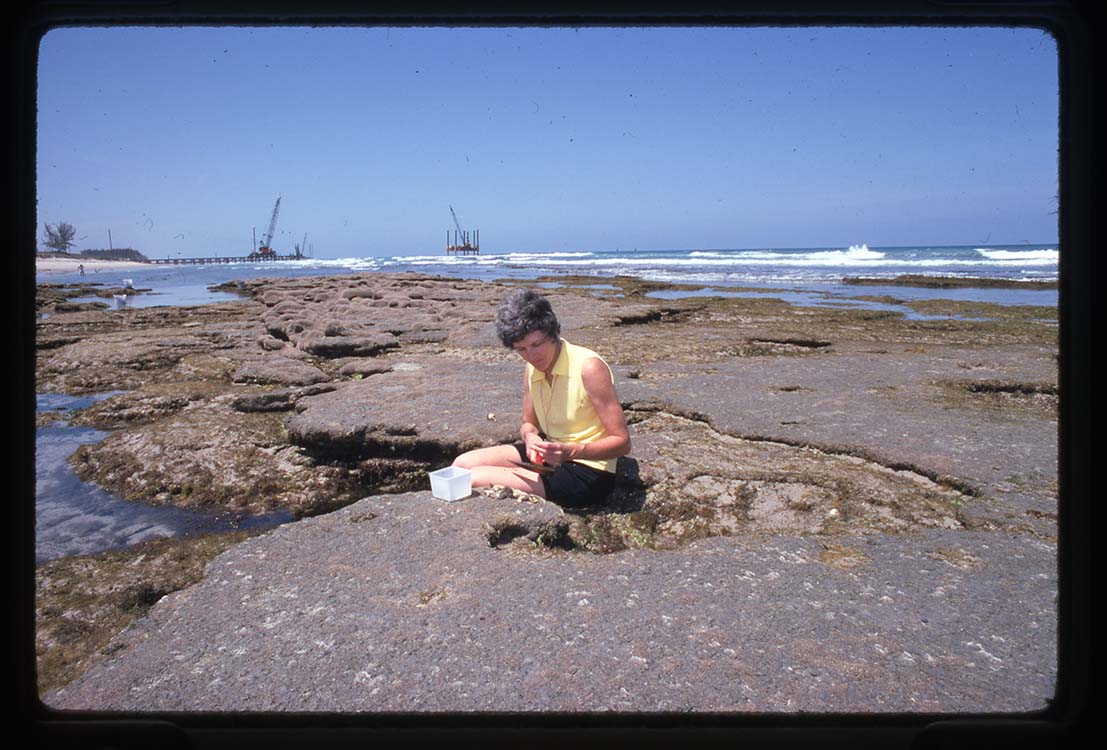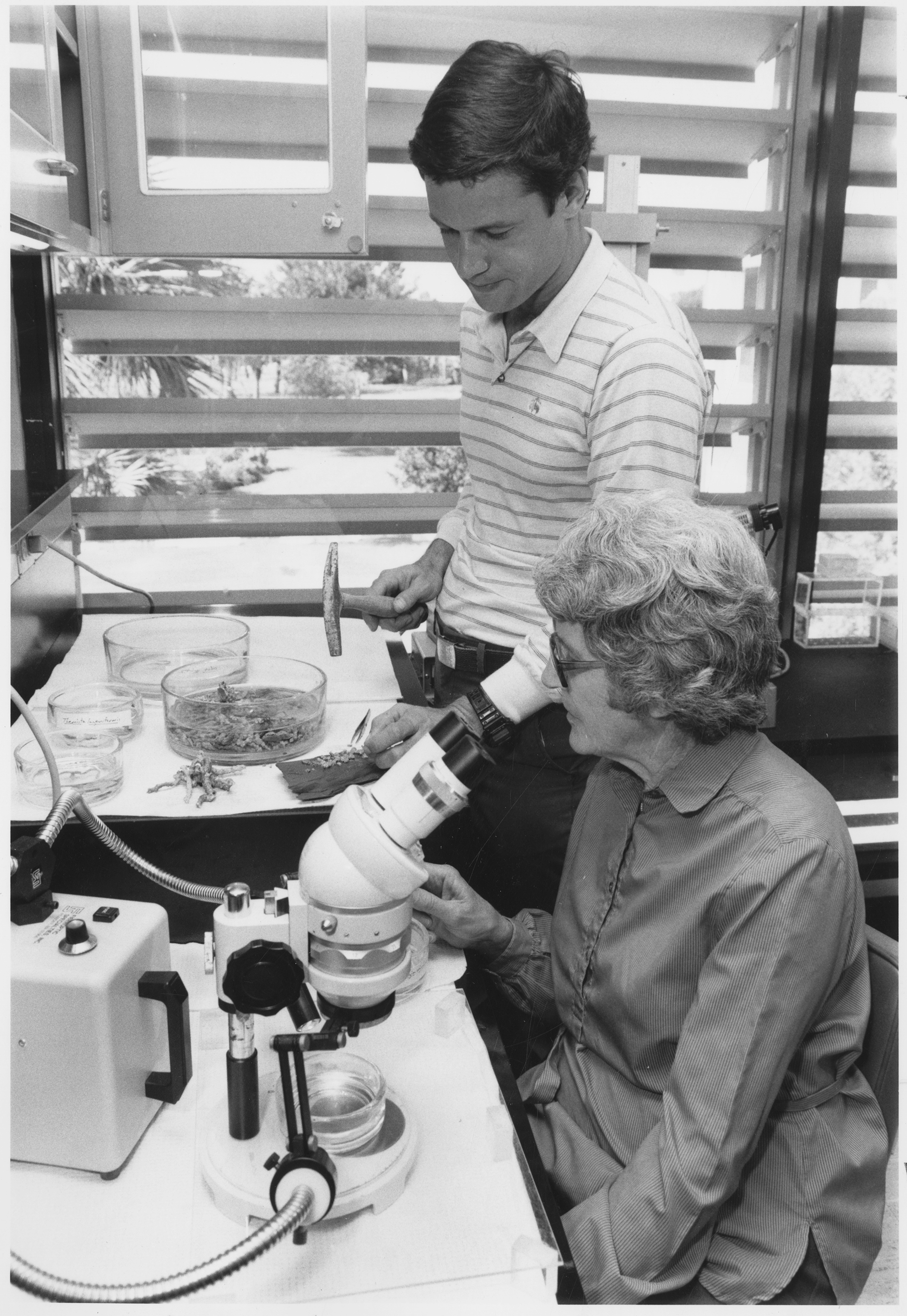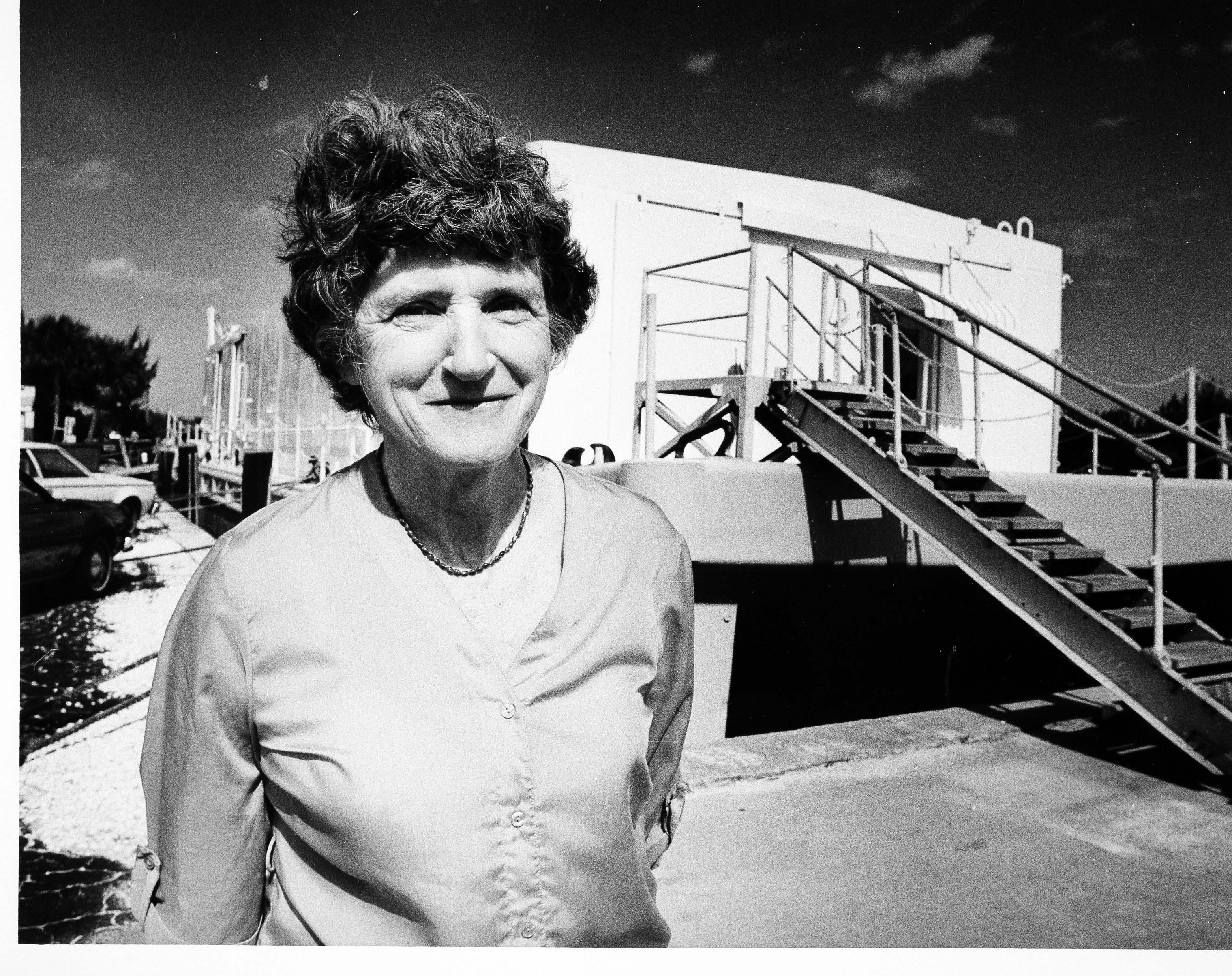Mary E. Rice
Smithsonian Institution Archives Oral History Collection, SIA009622
The Smithsonian’s Division of Worms welcomed Dr. Mary E. Rice (1926-2021) to the invertebrate zoology team in 1966. As she pioneered her way through her education and career, Rice seized every opportunity that came her way. Whether it was taking a six-month research cruise, encouraging students to pursue the new field “evo-devo” (evolutionary developmental biology), or cultivating research programs to provide new opportunities for future scientists, Rice advanced in her field as a result of her commitment to research. Mentors like Paul Illg supported her work, but when others doubted her, she quietly proved them wrong through consistently high achievement.
In her thirty-six years at the National Museum of Natural History (NMNH), Rice fulfilled her desire to become a research scientist, and became noted for her studies of sipunculan worms. She was a curator for the Division of Worms, as well as founding director of the Smithsonian Marine Station at Fort Pierce, which made her the first woman to direct a science unit. Rice brought with her a wealth of field experience and new ideas and methods to expand the zoology and marine science departments at the Smithsonian.
Rice reflected on her journey to becoming the acclaimed scientist she is today during a series of oral history interviews in 2010. These interviews illuminate her experience as a woman in a male-dominated field, how she strengthened the invertebrate zoology assets at NMNH, and how she built a new research station—there is even story about how she once floated a house down the Indian River Lagoon.
“It was one of the best decisions.”
Session I-8 0:35:37-0:36:06
On going into a Ph.D. program at University of Washington
The first two weeks I was there, I was in the invertebrate zoology course, thinking “What am I doing here?” I was about ten years older than any of the other students. But I soon got over that and never thought about it again. It was one of the best decisions, the best decision professionally that I could have made.
“I could do a great deal for the museum.”
Session I-9 0:25:37-0:27:34
On the transition from working in Washington, D.C. to working in Florida
Well, for me it was relatively smooth because I was in a locality where I could do the kind of research I’d wanted, but I still, of course, felt the responsibility for my curatorial position in Washington, but I never knew whether I had the complete approval to be down there. Gene Wallen had written a letter, which he copied to me, to, I think it was the director of the museum, telling of my wish to work there and saying, “We hope this will be all right with you,” kind of thing. But I never knew whether I was going to be called back, because I felt I could be called back at any time, so it was a bit of uncertainty for me.
I think, finally, I was given an official field assignment there, but for about nine years I lived in a mobile home and rented space, not knowing whether I might be called back any day. But my position was that I felt that being there in Fort Pierce, I could do a great deal for the museum, even more than probably being in Washington, because I was in a position to make resources available for museum scientists to work there, especially since I was there full-time and there were a number of museum scientists who were interested in working there.
“He was kind of skeptical."
Session I-8 0:54:21-0:54:44
[My professor] was kind of skeptical about whether I would get anywhere, because one of his previous graduate students had tried and didn’t get very far, but he was willing to let me give it a try. I said I wanted to compare the development of these three species. As it turned out, good luck again. It was a fortunate choice.
“I was committed to being a biologist.”
Interview I-8, 0:04:41-0:05:50
RICE: I can go back to the farm again and say that I learned to appreciate nature and to be curious about it and sensitive to it while growing up on the farm, and at an early age or certainly by the time I was twelve years old, I had my first microscope. Before I ever got to high school, I was committed to being a biologist.
HENSON: Why?
RICE: Because I loved the natural world. I was so interested in the animals, and I remember gathering frog eggs and watching them mature to tadpoles and watching praying mantis eggs hatch, and with many pets around, was always exposed to animals that I loved.
“We have a connection.”
Session I-10 1:08:58-1:10:10
On working off the Mall at Fort Pierce:
RICE: You have to keep working at recognition from them all. You have to keep reminding them, “We’re down here. We’re a part of you.” But at the same time, we feel that we are providing a real service to the scientists who are stationed in these other localities. That, we feel, is one of our commitments and obligations. So, by making available to the other marine scientists within the Institution, and that includes both SERC [Smithsonian Environmental Research Center] and STRI [Smithsonian Tropical Research Institute], as well as the museum, we feel that we have connected, we have a connection and interaction with the entire Institution.
HENSON: Does it give you any more freedom to be off the Mall in some ways?
RICE: Oh, yes, there’s sometimes an advantage to being forgotten. [LAUGHTER]
Interested in hearing more from Dr. Mary E. Rice or the National Museum of Natural History?
- National Museum of Natural History 100th Anniversary Interviews, 2009-2011, Smithsonian Institution Archives, Record Unit 9622.
- National Museum of National History, Division of Worms, Correspondence, 1965-1972, Smithsonian Institution Archives, Accession 10-048.
Want to learn more about Mary Rice?
- Mary E. Rice, Wikipedia article
Curious about Mary’s evo-devo research on sipunculan worms?
- Sipuncula: an emerging model of spirialian development and evolution
- Comparative Development and the Evolution of Life History Diversity in Sipuncula
- And more!
Eager to know more about Smithsonian Women in Science? Check out these resources:
- Smithsonian Institution Archives, The Bigger Picture blog, Smithsonian Women in Science
- Smithsonian Institution Archives, The Bigger Picture blog, Women in Science Wednesday posts
- Smithsonian American Women’s History Initiative, Because of Her Story, Smithsonian Women’s History, Women in Science
Related Resources:
- Paul Illg Oral History Interview, Smithsonian Institution Archives, Record Unit 9609
- Department of Invertebrate Zoology, National Museum of Natural History
- Smithsonian Marine Station at Fort Pierce
Blogs on Invertebrate Zoology:
- Department of Invertebrate Zoology News – No Bones, Smithsonian National Museum of Natural History
- Smithsonian Ocean: Find Your Blue, Invertebrate, Worms






